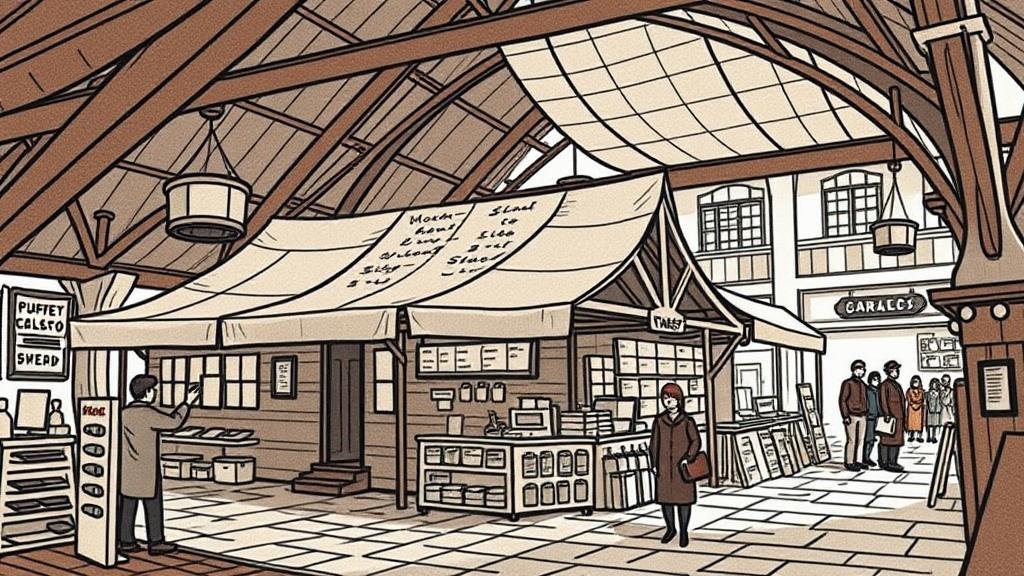Mapping Forgotten Market Halls for Community Trade Artifacts
Mapping Forgotten Market Halls for Community Trade Artifacts
The evolution of market halls has been a significant part of urban economic history. These structures served as epicenters for local trade, community interactions, and cultural exchange. But, many market halls have fallen into disrepair or been repurposed, leading to a loss of cultural heritage. This article explores the importance of mapping these forgotten market halls, emphasizing their potential as community hubs for trade artifacts, and contributing to local economies and cultural identity.
Historical Context
Market halls have existed for centuries, with roots tracing back to ancient civilizations where goods were traded publicly. For example, the iconic Halles de Paris in France established in the 12th century acted as a bustling center for trade and social interaction until its closure in 1971. Similarly, the historic Reading Terminal Market in Philadelphia, established in 1893, still functions as a vibrant community market. e examples illustrate the important role market halls have played in fostering community ties and supporting local economies.
The Decline of Market Halls
Despite their historical significance, many market halls have experienced a decline due to several factors:
- Urbanization and the rise of supermarkets have shifted consumer behavior away from traditional market settings.
- Economic downturns have led to disinvestment in public spaces, resulting in the deterioration of market facilities.
- Changing demographics and migration patterns have left some market halls underutilized or abandoned.
A notable example is the El Mercado de la Abundancia in San Juan, Puerto Rico, which once served as a vital community space but has struggled to remain relevant in today’s marketplace.
The Need for Mapping
Mapping forgotten market halls can serve multiple purposes. It can be a foundational step in revitalization efforts, allowing communities to:
- Document historical significance and cultural narratives associated with these spaces.
- Identify potential for redevelopment into community-oriented trade centers.
- Engage local residents and stakeholders in planning and decision-making processes.
For example, the Mapping the Foodscape project in London focuses on recording and revitalizing overlooked community food markets, which informs future urban planning and community-based interventions.
Methodology for Mapping Market Halls
A comprehensive methodology for mapping forgotten market halls involves several key steps:
- Data Collection: Use archival research, interviews, and community surveys to gather historical data and current usage patterns.
- Geospatial Analysis: Employ GIS (Geographic Information Systems) technology to visualize data effectively, highlighting accessibility and demographic profiles of areas surrounding market halls.
- Stakeholder Engagement: Host community workshops and forums to involve local residents in the mapping process, ensuring that their voices and insights steer future developments.
Case Studies of Successful Revitalizations
Several cases demonstrate the successful revitalization of market halls through mapping and community engagement:
- The Grand Central Market in Los Angeles: After facing decline in the mid-20th century, it was revitalized in 2012 with modern vendors, retaining its historic charm while catering to evolving customer preferences.
- The Borough Market in London: Originally established in the 13th century, it now serves as a hotspot for artisan food producers and has become integral to London’s culinary landscape.
These examples illustrate not only the resilience of market halls but also the importance of community-driven efforts in their revitalization.
Challenges and Considerations
While mapping and revitalizing market halls present numerous opportunities, challenges remain:
- Funding and Resources: Securing investment for restoration projects can be complicated, often requiring collaboration between public and private sectors.
- Cultural Sensitivity: Revitalization efforts must respect the heritage and needs of local communities, ensuring that initiatives do not displace existing cultural practices.
- Market Dynamics: Understanding current market trends is crucial to ensuring the sustainability of revitalized spaces.
Conclusion and Actionable Takeaways
Mapping forgotten market halls for community trade artifacts offers a pathway to preserve cultural heritage while fulfilling contemporary community needs. As seen in successful case studies, community involvement is pivotal in this process. To effectively leverage the potential of these spaces, stakeholders should:
- Initiate community mapping projects to raise awareness and gather essential data.
- Engage with local government and private entities to secure funding for revitalization.
- Develop strategies that incorporate both historical significance and modern trends in trade and commerce.
Through collective efforts, forgotten market halls can be transformed into thriving centers of community trade, benefiting local economies and preserving cultural identities for future generations.



